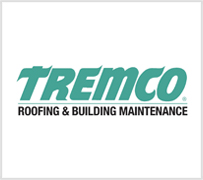
Home / News / Winter Creates Havoc on Roofing

2016-2017 has been a winter of unprecedented storm activity — huge snow amounts in the West, torrential rains in California, vast temperature fluctuations, high winds, and more. Every single one of these extreme weather condition is very hard on roofing materials. Commercial roofing in particular is vulnerable to bad weather, especially heavy snow loads.
There are some simple roof maintenance activities homeowners and especially business owners should perform after every major storm. Catching simple repairs now can prevent costly damage when the next storm hits.
Things to check for:
Snow Load — snow load can be dangerous both from above and below. Heavy snows can cause weakened roofs to collapse. Unprecedented snowfalls can cause even healthy roofs to give way. When in doubt, remove it — preferably by a reputable roofing company or maintenance professional who knows how to do it safely and without damaging the roof.
Icicles — these form when snow melts and drops down to the eves and refreeze. About 15 people each year lose their lives to falling ice. The problem is most often caused by inadequate insulation in the attic and improper roof ventilation.
Gutters — ice dams in gutters often back water up onto or under roofing. When the water freezes it works like a crowbar, prying materials loose and eventually causing leaks.
Missing Materials — examine the roof for missing roof materials (whether it is tile, shingle, shake or foam roofing)
Missing Flashing — check for missing flashing, which are metal strips that protect the edges of your roof and any place the roof is penetrated by a vent stack, AC or heating unit, skylight, chimney, etc.
Missing Sealant — check the seals around any penetrations in your roof (skylights, soffits, chimneys, etc.)
Water Marks — check for dark spots where water might be pooling, and also check your attic and home for any suspicious stains.
Hire a professional roofer:
If you detect damage, it is a good idea to get a professional roofer to complete the repairs. Attempting DIY repairs in winter can be dangerous to you as well as difficult to accomplish, particularly in cold, snow, rain or wind. It’s also a good idea to watch out for fly-by-night companies that often swoop in after a storm, offering fast and cheap roof repairs — their work is usually very poor, and they’re usually gone to the next town by the time you realize it.
Here are a few tips on how to find a reputable roofer:
Licensed —A roofing contractor license indicates that a company is licensed to work as a roofer in that state. Every state has different requirement, but you can ask or a copy of their license and determine what type of license it is and find out what the licensing rules are in your state.
Insured – does your roofing contractor have the proper amount of insurance to cover problems that might arise. Ask to see their certificate of insurance that shows they have general liability and workers’ compensation.
Bonded — a performance bond to guarantee satisfactory completion or a project by the roofing contractor.
References — ask for references that you can talk to about the company’s past performance. Look up the company with the Better Business Bureau, Angie’s List, Yelp, etc., for comments and on the company’s reputation.











